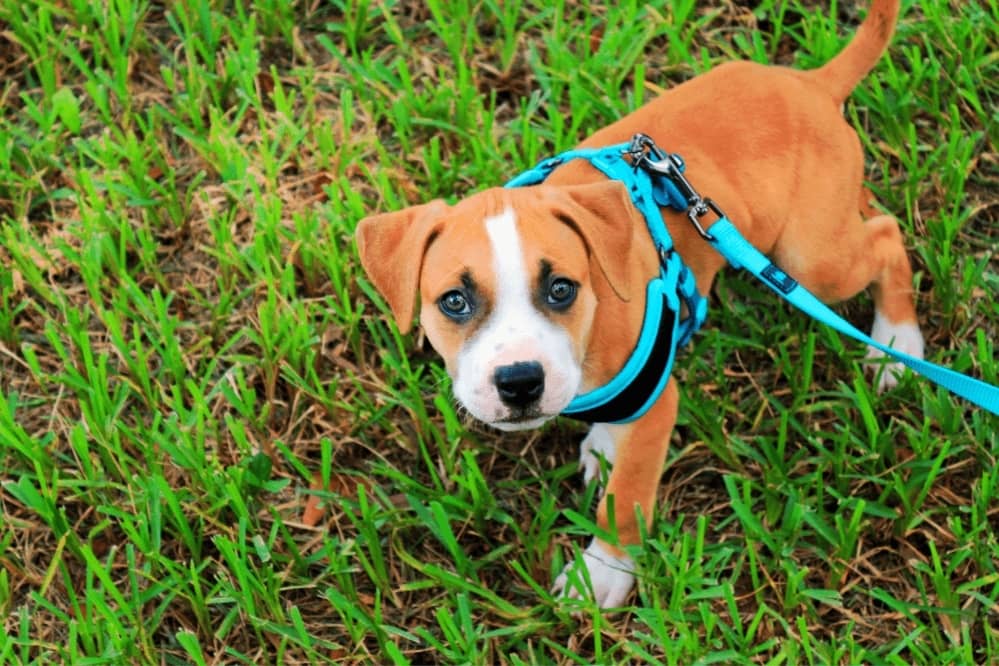It is the case that while we credit dogs with a lot of intelligence, there are many dog owners who underestimate the ingenuity of their four-legged companions.
Most dog owners probably have likewise, and the evidence of that is when we discover Rex has managed to open the treat cupboard or found a way to escape the yard to go play with the other neighborhood dogs.
Your Nimble Dog
Another example of when owners are shocked at what their dog is capable of is when they have managed to escape their collars, and even more so, when they somehow manage to wriggle of their harness. In truth, while it may be difficult, it is certainly not impossible.
The reason is that the flexibility and dexterity of a dog’s body are rarely seen at their maximum. Taking a dog for a walk a few times a day will certainly not alert you to it, and even when fetching their ball, a dog is not exactly straining all its muscles.
However, you might see how well a dog can flex their body when you throw something in the air for them to catch, or if the games you play with them involves a lot of movement.
Escaping From a Harness With Dexterity
As we’ve discussed dogs are extremely nimble and have a great deal of dexterity. Couple these with an absolute desire on the part of your dog to get out of their harness, then they are going to move every joint, and strain every muscle to do so.
They will wriggle, pull, twist, turn, crouch, and make any other type of movement to turn themselves into the doggy equivalent of Harry Houdini. Dogs have been seen to be able to escape their harnesses in seconds, and while it may your dog longer, in the end, if there is a will, they will find a way.
Escaping From a Harness With Brute Force
The second way a dog might escape from a harness is sheer brute force, coupled with their claws and their teeth. In effect, they use whatever they can to damage the harness enough so that it simple rips apart and they can get out of it.
Admittedly, this is more likely to happen with cheap and sub-standard harnesses, so if you are thinking of buying a harness, do yourself, and your dog a favor, buy one that seems to be high quality and has many good reviews.
The other way in which a dog escapes in this way is simply to scratch at it, and if they can, they will gnaw and rip at it with their teeth too. They will even rub up against rough surfaces such as a brick wall or large tree. Eventually, the harness succumbs to the damage being inflicted on it and fail.
Escaping From Poor Quality Harnesses
We’ve already mentioned how a poor quality harness can aid a dog’s quest to escape as they put up very resistance to the damage being inflicted on them. However, a poor quality harness can allow a dog to escape, even when it is not even trying to.
This is where the harness is so sub-standard, that even in normal use, scenarios like the clasps breaking or coming open, or the leash hook breaking, or simply that the material or one of the seams rips open.
In all of these circumstances, one possibility is your dog escapes the leash and runs off. While strictly speaking that isn’t them escaping their harness, it has the same effect.
What does constitute them escaping the harness is when the faults above cause the harness to effectively fail, leaving you dog free to escape from it without much effort on their part.
Why Would they Want To Escape Their Harness?
There could be many reasons why a dog might seek to escape their harness, and each time they do so, there could be a different one, but more likely is a single reason such as:
- The harness is too tight and causing them pain
- The harness is rubbing a sensitive part of their skin
- The harness wearing was introduced to the dog in wrong way
- Bad experience wearing a harness with a different owner
- Genuine fear of wearing it
There could be other reasons specific to each individual dog, so it may take some time determining which is the one that causes your dog to try to escape their harness.
How to Stop Dogs Escaping Their Harness?
This deserves an article of its own, but a few simple principles to follow will help for now. First, buy only a quality harness. and when introducing the harness to your dog, don’t rush it.
Try not to get visibly annoyed if they do not take it immediately as this will stress them. Start them with short periods of time wearing their harness, and gradually increase it. Finally, ensure that you adjust the straps correctly, so that the harness is comfortable.


